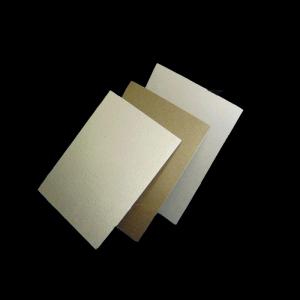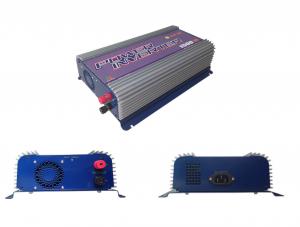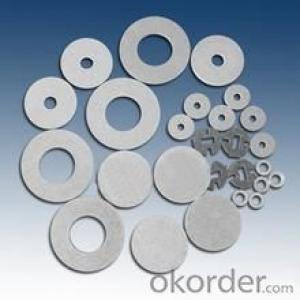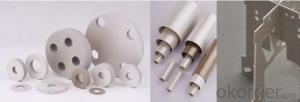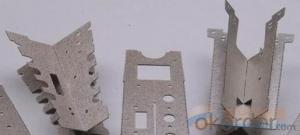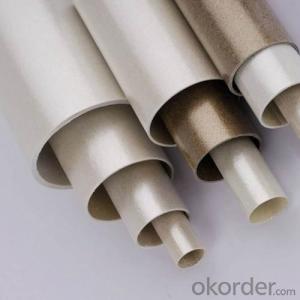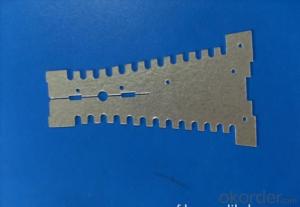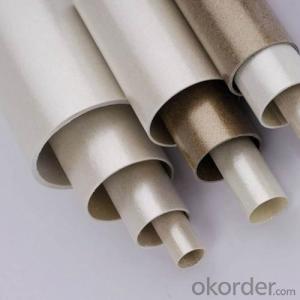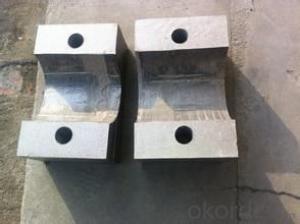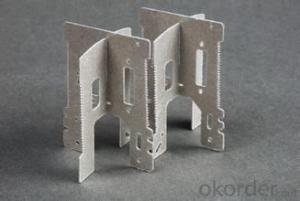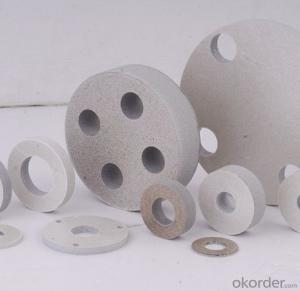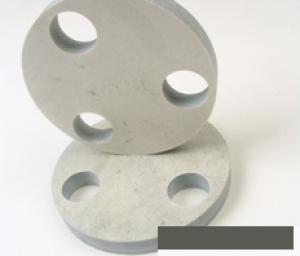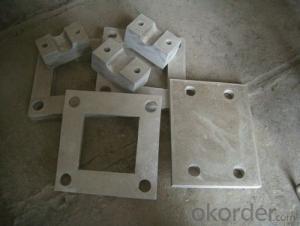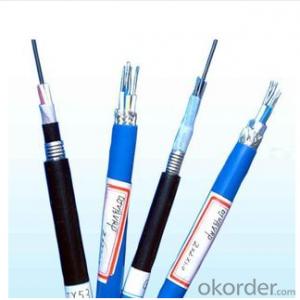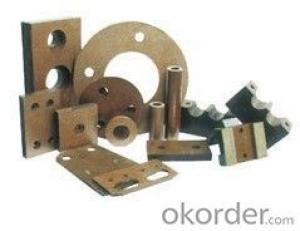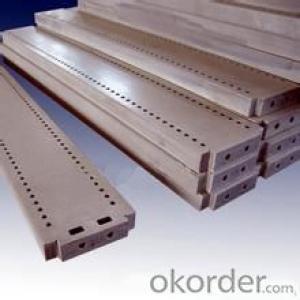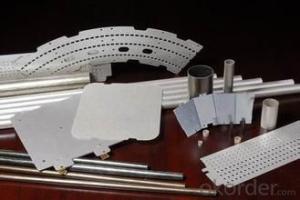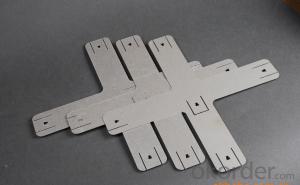Mica Parts Used as Partition Plate of the Electric Appliances
- Loading Port:
- Shanghai
- Payment Terms:
- TT OR LC
- Min Order Qty:
- 100 pc
- Supply Capability:
- 100000 pc/month
OKorder Service Pledge
OKorder Financial Service
You Might Also Like
1. Introductions:
Mica plate is made of mica paper with highperformance organic silicon resin. After heating and pressing, the mica plate can be made into rigid or flexible insulating plates. The mica content is about 90% and the organic silicon resin content is 10%.
Mica is a rigid substrate able to withstand very high temperatures and are suited for applications up to 500°F (260°C). Mica heating elements offer several distinct advantages over other flexible heater technologies, including extremely low leakage, lower material costs, and higher operating temperatures. Our mica heating element is made by detail order requirments
2. Applications:
Typical applications of mica heating elements are air heaters, enclosure systems, food service equipment, process and packaging equipment.
3. Main features of Mica Parts:
Mica heating elements offer several distinct advantages over other flexible heater technologies, including extremely low leakage, lower material costs, and higher operating temperatures. Our mica heating element is made by detail order requirments
4. Technical Parameters:
MICA SHEET -----Technical data | ||||||||
ITEM | UNIT | RM | RP | RM-T | RP-T | FM | FP | |
Hardness |
| Rigid | Rigid | Rigid | Rigid | Flexible | Flexible | |
Mica paper |
| Muscovite | Phlogopite | Muscovite | Phlogopite | Muscovite | Phlogopite | |
Thickness | mm | 0.1-2.0 | 0.1-2.0 | 3.0-50 | 3.0-50 | 0.1-2.0 | 0.1-2.0 | |
Mica content | % | ≥90 | ≥90 | >88 | >88 | ≥90 | ≥90 | |
Bond Content | % | <10< span=""> | <10< span=""> | <12< span=""> | <12< span=""> | <10< span=""> | <10< span=""> | |
Density | g/m 3 | 1.6~2.45 | 1.6~2.45 | 2.1~2.4 | 2.1~2.4 | 1.6~2.45 | 1.6~2.45 | |
Heat | Continuous | ℃ | 500 | 700 | 500 | 700 | 500 | 700 |
Peak | ℃ | 700 | 900 | 700 | 900 | 700 | 900 | |
Heat loss at 500℃ | % | <1< span=""> | <1< span=""> | <1< span=""> | <2< span=""> | <1< span=""> | <1< span=""> | |
Heat loss at 700℃ | % | <2< span=""> | <2< span=""> | <1< span=""> | <2< span=""> | <2< span=""> | <2< span=""> | |
Flexural strength | Mpa | >160 | >140 | — | — | <1< span=""> | <1< span=""> | |
Water absorption 24h/23°C | % | <1< span=""> | <1< span=""> | <1< span=""> | <2< span=""> | — | — | |
Dielectric strength | KV/mm | >20 | >20 | >15 | >15 | >15 | >15 | |
Volume | 23℃ | ΩNaN | >1017 | >1017 | >1017 | >1017 | — | — |
500℃ | ΩNaN | >1012 | >1012 | >1012 | >1012 | — | — | |
Smoking Test | s | <4< span=""> | <4< span=""> | — | — | — | — | |
FAQ
We have organized several common questions for our clients,may help you sincerely:
--------What is the use of mica parts?
Mica laminate and washers made of our own high quality mica plates are used for home appliances, electro-magnets, micro-sensitive control gear etc
---------Which type of mica parts we can produce?
1. Rigid mica parts or Flexible mica parts
2. Muscovite mica parts or phlogopite mica parts
3. Thin mica parts or thick mica parts
4. All the special sized mica parts need drawing.
----------what advantages of mica parts?
1. Good high voltage insulation materials
2. Do not easily break up
3. Easily produce special size
- Q: What is the electrical performance of insulating materials
- The electrical insulating material is a material that is electrically insulated from the device and has a certain mechanical strength, typically having a resistivity of 106 to 1019.cm. Their function in electrical technology is as follows: 1 Insulate the conductor from the other parts; 2 Separate the conductors of different potentials 3 Provide the conditions for the energy storage of the capacitor 4 Improve the potential gradient in the high voltage electric field.
- Q: What kind of insulation is the insulating
- Insulation is the core technology of aluminum substrate. Currently on the market most of the aluminum substrate insulation layer using epoxy resin, the advantages of this type of insulation is: good adhesion; drawback is: thermal resistance, dielectric strength is limited, it is difficult to meet the safety requirements. Such aluminum substrates are only suitable for low power density applications. High-end aluminum substrate insulation layer is generally composed of high thermal conductivity and high insulation ceramic powder filled with special polymer composition.
- Q: What type of enameled wire and insulation material is used for the compressor
- Motor insulation class The insulation class is divided according to the permissible limit temperature of the insulation material used for the motor. There are Y, A, E, B, F, H, C and several other levels, the allowable limit temperature at all levels as shown in the table below. The so-called permissible limit temperature refers to the permissible maximum operating temperature of the motor insulation material, which reflects the heat resistance of the insulating material. Insulation material is divided into Y grade, A grade, grade E, grade B, grade F, grade H, grade C, permissible temperature (℃) 90,105,120,130,155,180, 180 ℃ or higher.
- Q: What insulating materials are used for high frequency transformers?
- Silicon steel lacquered lacquer can be divided into surface enamel and varnish, drying and drying and self-drying. High-frequency transformer insulation paint choice should have good dielectric properties, a higher insulation resistance and electrical strength; and electrical appliances use the environment to match the heat resistance; good mechanical properties and wear resistance; good thermal conductivity Sexual and moisture-proof performance; economical, reliable, wide range and so on.
- Q: What is the insulating material in the middle of the connecting wire?
- Looked for a long time to understand your problem, I can see with a relatively thin tube into the insulation, the insulation tube into a plug in the insulation of the skin. Or for the wire, without the foreskin of the wire is not safe
- Q: What are the gas insulation materials?
- The relative breakdown strength of air (at air 1) at the standard pressure (101335Pa) is as follows: nitrogen, 1; hydrogen, 0.5; carbon dioxide, 0.9; sulfur hexafluoride, 2.5; freon-12,2.7 The
- Q: What is the main purpose of insulating materials?
- Tensile strength: The cross-sectional area of the insulating material can withstand tensile forces, such as glass per square centimeter cross-sectional area can withstand the resistance of 1400 Newton.
- Q: What are the commonly used insulating materials?
- Mainly used for motor, electrical winding insulation, switch the bottom plate and insulators, etc. Organic insulation materials are: shellac, resin, rubber, cotton yarn, paper, linen, rayon,
- Q: Wear-resistant, high temperature, insulation materials which
- Hexagonal boron nitride - good heat resistance, thermal stability, thermal conductivity, hardness is not high, the only easy machining of ceramics. Is the ideal heat dissipation material and high temperature insulation material. For high temperature containers, semiconductor thermal insulation materials, high temperature bearings, thermocouple casing. Cubic boron nitride - hardness close to the diamond, excellent wear-resistant materials. For high-speed cutting tools, such as drawing die.
- Q: What is the thermal aging and electrical aging of insulating materials?
- Electrical aging more common in high-voltage electrical appliances, the main mechanism is the occurrence of partial discharge of insulating material under high pressure, resulting in strong oxidant ozone. Ozone is easy to cause ozone cracking of the material. Partial discharge will produce nitrogen oxides, which combine with the moisture to produce nitric acid, corrosion of insulating materials; partial discharge of high-speed charged particles bombardment of insulating material molecules, will promote its ionization, fission and damage; in addition to local discharge will make dielectric loss Increased, local heat of the material, resulting in heat aging.
Send your message to us
Mica Parts Used as Partition Plate of the Electric Appliances
- Loading Port:
- Shanghai
- Payment Terms:
- TT OR LC
- Min Order Qty:
- 100 pc
- Supply Capability:
- 100000 pc/month
OKorder Service Pledge
OKorder Financial Service
Similar products
Hot products
Hot Searches
Related keywords





